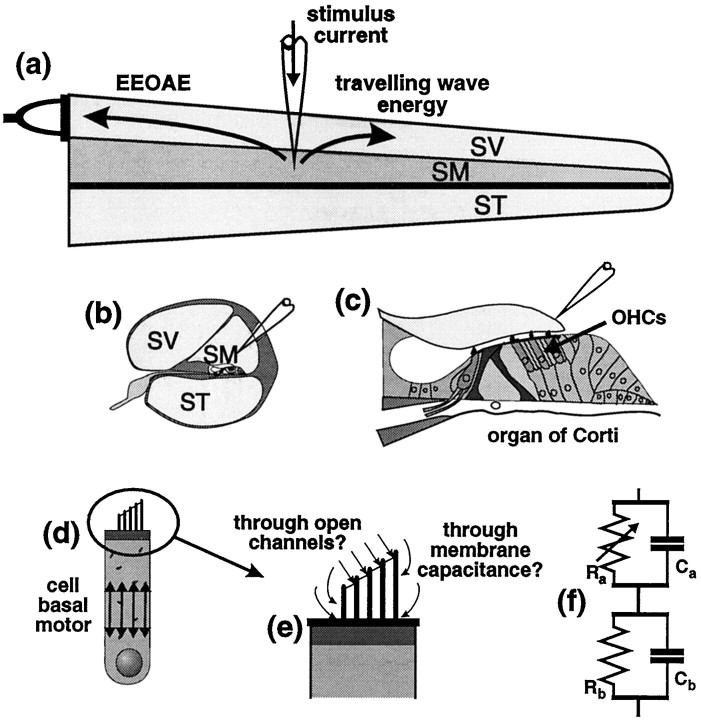Fig. 1.
Application of alternating current to scala media of the cochlea [as shown in longitudinal section (a), cross section (b) and magnified cross section (c)] produces measurable sound (EEOAEs) in the ear canal. EEOAEs are believed to result from electromotile responses of OHCs (c, d), producing mechanical energy that propagates to the stapes and through the middle ear (a). OHC motility is widely held to underlie the frequency selectivity and threshold sensitivity of hearing. Evidence (see text) points to a voltage-sensitive motor located in the basolateral cell wall (d) and presumably activated during sensory transduction by the cell’s own receptor potential. Extrinsically applied currents may activate a membrane-based motility source through two parallel pathways; either resistive pathways offered by open transduction channels in stereocilia or capacitive pathways through the apical cell membranes (e, f). Modulation of EEOAE waveforms by low-frequency sound is consistent with high-frequency current entering via mechano-sensitive resistive pathways. SV, Scala vestibuli; SM, scala media; ST, scala tympani; Ra, apical resistance;Ca, apical capacitance;Rb, basolateral resistance;Cb, basolateral capacitance.

